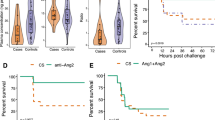Abstract
OBJECTIVE:
To determine the incidence of bronchopulmonary dysplasia (BPD) in low birth weight (LBW) infants <1251 g managed with early bubble nasal continuous positive airway pressure (NCPAP) and a gentle ventilation strategy using the newly proposed definition for BPD and the previous definitions.
METHODS:
Needs for supplemental oxygen and positive pressure (positive pressure ventilation or NCPAP) during initial hospitalization were evaluated in 266 inborn LBW infants (birth weight <1251 g). The data were categorized in three weight groups, <751, 751 to 1000 and 1001 to 1250 g and the incidence of BPD was computed in survivors based on oxygen need at 28 days, 36 weeks postmenstrual age (PMA) and the new severity of BPD criteria, that is, mild BPD: need for supplemental oxygen ≥28 days, but not at 36 weeks PMA; moderate BPD: need for supplemental oxygen ≥28 days and <30% at 36 weeks PMA and severe BPD: need for supplemental oxygen ≥28 days, and >30% at 36 weeks PMA and/or positive pressure at 36 weeks PMA. Further, BPD-associated comorbidities and short-term outcome data during hospitalization were compared among the groups, defined by severity of BPD.
RESULTS:
Among LBW infants <1251 g, the incidences of BPD at 28 days and 36 weeks PMA were 21.1 and 7.4% respectively. Using the newly defined criteria, the incidences of mild, moderate and severe BPD were 13.5, 4.8 and 2.6%, respectively. In total, 64.6% of these infants had mild BPD and 70.8% weighed <751 g at birth. Associated comorbidities correlated significantly with grades of underlying pulmonary disease. Also, significantly longer hospital stay, discharge at a higher PMA and lower growth velocity was observed with increasing grades of BPD.
CONCLUSIONS:
The new system for grading the severity of BPD offers a better description of underlying pulmonary disease and correlates with the infant's maturity, growth and overall severity of illness. Whether it will have a role in predicting long-term outcome remains to be determined.
This is a preview of subscription content, access via your institution
Access options
Subscribe to this journal
Receive 12 print issues and online access
$259.00 per year
only $21.58 per issue
Buy this article
- Purchase on Springer Link
- Instant access to full article PDF
Prices may be subject to local taxes which are calculated during checkout



Similar content being viewed by others
References
Northway Jr WH, Rosan RC, Porter DY . Pulmonary disease following respirator therapy of hyaline-membrane disease: bronchopulmonary dysplasia. N Engl J Med 1967;276:357–368.
Bancalari E, Gonzalez A . Clinical course and lung function abnormalities during development of neonatal chronic lung disease. In: Bland RD, Coalson JJ, editors Chronic Lung Disease in Early Infancy. New York: Marcel Dekker; 2000 p. 41–64.
National Institutes of Health. Report of Workshop on Bronchopulmonary Dysplasia; NIH Publication No. 80-1660. Washington, DC: National Institutes of Health; 1979.
Shennan AT, Dunn MS, Ohlsson A, Lennox K, Hoskins EM . Abnormal pulmonary outcomes in premature infants: prediction from oxygen requirement in the neonatal period. Pediatrics 1988;82:527–532.
Jobe AH, Bancalari E . Bronchopulmonary dysplasia. NICHD–NHLBI–ORD Workshop. Am J Respir Crit Care Med 2001;163:1723–1729.
Palta M, Sadek-Badawi M, Evans M, Weinstein MR, McGuinnes G . Functional assessment of a multicenter very low-birth-weight cohort at age 5 years: Newborn Lung Project. Arch Pediatr Adolesc Med 2000;154:23–30.
Lemons JA, Bauer CR, Oh W, Korones SB, Papile LA, Stoll BJ . Very low birth weight outcomes of the National Institute of Child Health and Human Development Neonatal Research Network, January 1995 through December 1996. Pediatrics 2001;107:1–8.
Bancalari E, Abdenour GE, Feller R, Gannon J . Bronchopulmonary dysplasia: clinical presentation. J Pediatr 1979;95:819–823.
Bancalari E, Claure N, Sosenko IR . Bronchopulmonary dysplasia: changes in pathogenesis, epidemiology and definition. Semin Neonatol 2003;8:63–71.
Palta M, Gabbert D, Weinstein MR, Peters ME . Multivariate assessment of traditional risk factors for chronic lung disease in very low birth weight neonates. J Pediatr 1991;119:285–292.
Palta M, Sadek M, Barnet JH, et al. Evaluation of criteria for chronic lung disease in surviving very low birth weight infants. J Pediatr 1998;132:57–63.
Tepper RS, Morgan WJ, Cota K, Taussig LM . Expiratory flow limitation in infants with bronchopulmonary dysplasia. J Pediatr 1986;109:1040–1046.
Gerhardt T, Hehre D, Feller R, Reifenberg L, Bancalari E . Serial determination of pulmonary function in infants with chronic lung disease. J Pediatr 1987;110:448–456.
Baraldi E, Filippone M, Trevisanuto D, Zanardo V, Zacchello F . Pulmonary function until two years of life in infants with bronchopulmonary dysplasia. Am J Respir Crit Care Med 1997;155:149–155.
Northway W, Moss R, Carlisle K, et al. Late pulmonary sequelae of bronchopulmonary dysplasia. N Engl J Med 1990;323:1793–1799.
Ellsbury DL, Acarregui MJ, McGuinness GA, Klein JM . Variability in the use of supplemental oxygen for bronchopulmonary dysplasia. J Pediatr 2002;140:247–249.
Askie LM, Henderson-Smart DJ, Irwig L, Simpson JM . Oxygen-saturation targets and outcomes in extremely preterm infants. N Engl J Med 2003;349 (10):959–967.
Walsh MC, Wilson-Costello D, Zadell A, Newman N, Fanaroff A . Safety, reliability, and validity of a physiologic definition of bronchopulmonary dysplasia. J Perinatol 2003;23:451–456.
Acknowledgements
We thank our colleague Karl Schulze for his helpful suggestions.
Author information
Authors and Affiliations
Rights and permissions
About this article
Cite this article
Sahni, R., Ammari, A., Suri, M. et al. Is the New Definition of Bronchopulmonary Dysplasia More Useful?. J Perinatol 25, 41–46 (2005). https://doi.org/10.1038/sj.jp.7211210
Published:
Issue Date:
DOI: https://doi.org/10.1038/sj.jp.7211210
This article is cited by
-
Revisiting the definition of bronchopulmonary dysplasia in premature infants at a single center quaternary neonatal intensive care unit
Journal of Perinatology (2021)
-
Bronchopulmonary dysplasia: risk prediction models for very-low- birth-weight infants
Journal of Perinatology (2019)
-
Chorioamnionitis and subsequent bronchopulmonary dysplasia in very-low-birth weight infants: a 25-year cohort
Journal of Perinatology (2016)
-
Nasal respiratory support through the nares: its time has come
Journal of Perinatology (2010)
-
Bubble CPAP: Can we predict success or failure?
Indian Pediatrics (2010)



